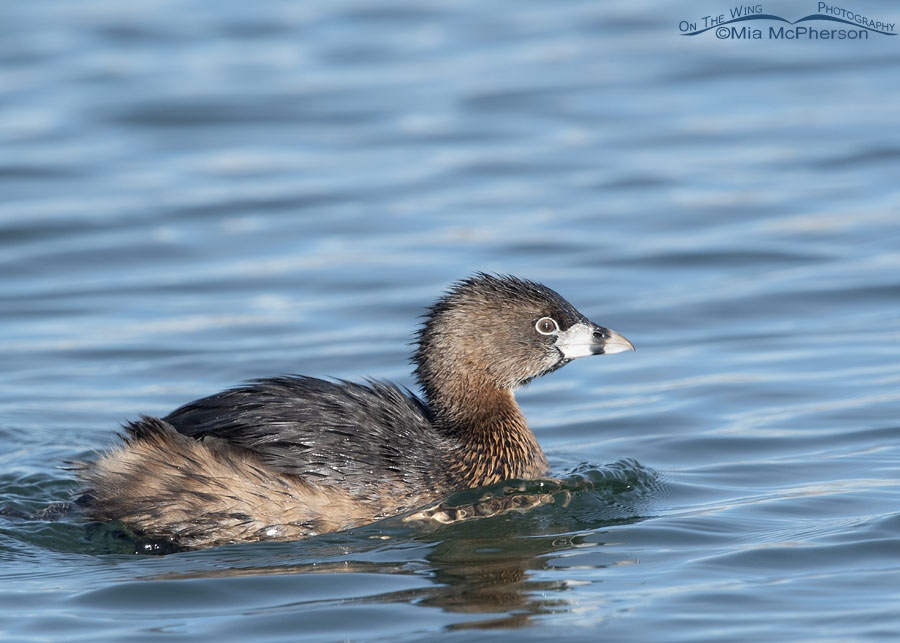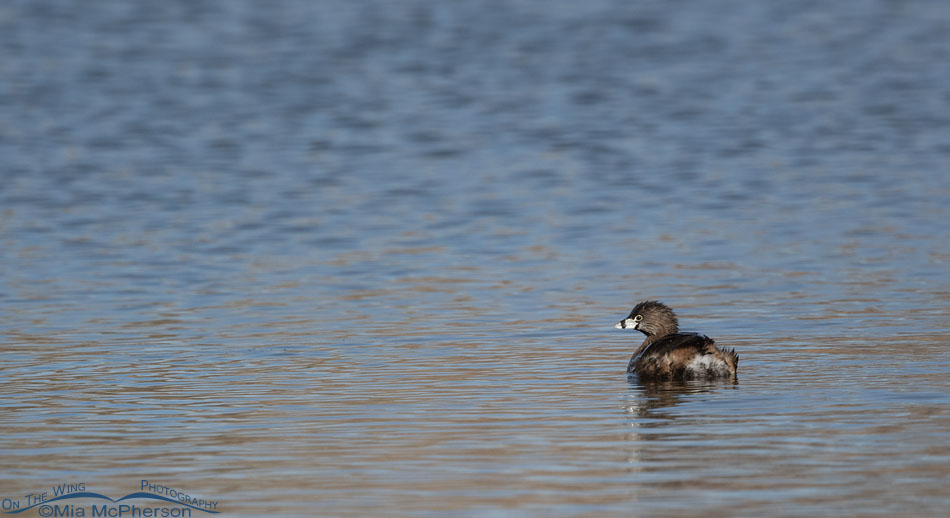I am noticing signs of spring’s impending arrival.
Just a few weeks ago, all of the Pied-billed Grebes I was seeing were in nonbreeding plumage. Yesterday, I saw that several of these grebes have transitioned into breeding plumage or are in the process of doing so.
With Pied-billed Grebes, the difference between nonbreeding and breeding plumage isn’t a dramatic change. The changes I look for are in the bills and throats of this grebe species.
In nonbreeding plumage, or Definitive Basic Plumage, the throats of this waterbird species are whitish-gray, and their bills are pale brownish-buff, with a possible faint outline of black markings.
 Winter Pied-billed Grebe up close – Nikon D500, tripod mounted, f7.1, 1/1000, ISO 500, +1.0 EV, Nikkor 500mm VR with 1.4x TC, natural light
Winter Pied-billed Grebe up close – Nikon D500, tripod mounted, f7.1, 1/1000, ISO 500, +1.0 EV, Nikkor 500mm VR with 1.4x TC, natural light
In breeding plumage, or Definitive Alternate Plumage, Pied-billed Grebes have a prominent dark band on an white to ivory colored bill and their throats have black feathers.
Yesterday, from a distance and up close, the dark band on the bill of the Pied-billed Grebe was obvious, and so was the grebe’s dark throat. The grebe’s bill and eye ring will be a lighter color than what is seen in these photos soon.
I enjoyed being able to photograph this grebe yesterday morning. Being outdoors with the birds felt marvelous. I desperately needed the nature break.
Life is good.
Mia
Click here to see more of my Pied-billed Grebe photos plus facts and information about this species.
 Urban Pied-billed Grebe from a distance – Nikon D500, tripod mounted, f7.1, 1/2500, ISO 500, Nikkor 500mm VR with 1.4x TC, natural light
Urban Pied-billed Grebe from a distance – Nikon D500, tripod mounted, f7.1, 1/2500, ISO 500, Nikkor 500mm VR with 1.4x TC, natural light


wonderful encounter with a really cute bird. I don’t see these all that often in my area.
Love the up close picture and detailed description! Thank so much for sharing your Nature Break!
That’s such a nice phrase – water dance
Thanks Mia
I am so glad that you got (and shared) this break.